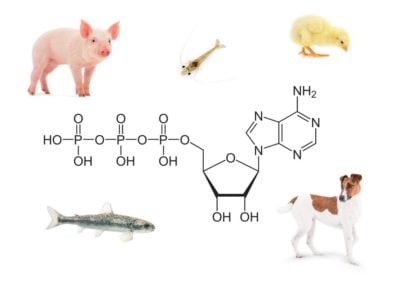The role of nucleotides in the diet of monogastric animals

Dear colleagues,
This week I will discuss nucleotides, a semi-essential nutrient that, when well balanced in animal diets, is an exceptional ally for improving animal health through nutrition.
As a quick summary about nucleotides, we can say that animal feed tends to be deficient in nucleotides, as few nutritionists take them into account in their formulations and feed ingredients tend to have negligible or unavailable concentrations. However, several studies show that the right level of nucleotides can:
– Improve immune development and disease resistance in puppies.
– Increase shrimp resistance to disease
– Improve the digestibility of soy-rich diets in carnivorous fish and shrimps.
– Improve growth, intestinal development, immune status and oxidative stress in salmon, pigs, chickens and suckling calves.
– Furthermore, nucleotides appear to improve, indirectly in my view, the liver function and intestinal flora of animals.
Although nucleotides can be synthesised de novo, several tissues, especially those with a rapid turnover rate, such as the intestinal mucosa and the immune system, can benefit from an exogenous supply to reduce energy expenditure.
During periods of illness, limited nutrient intake or rapid growth, nucleotides can become semi-essential nutrients.
However, the results of using nucleotides depend largely on the type of product used, so a state-of-the-art product should consider at least the following points:
– Concentration
– Balance
– Availability
And bear in mind that if they are not protected, they are not suitable for ruminants.
Another issue to bear in mind is not to exceed the recommended dose, as a high dose or an imbalance in the dose can have the opposite effect to that desired, due, for example, to an increase in uric acid levels at the metabolic level.
Finally, I am attaching an article which, although it is a few years old, contains a series of reflections that are still very valid today.
Enjoy the article.

